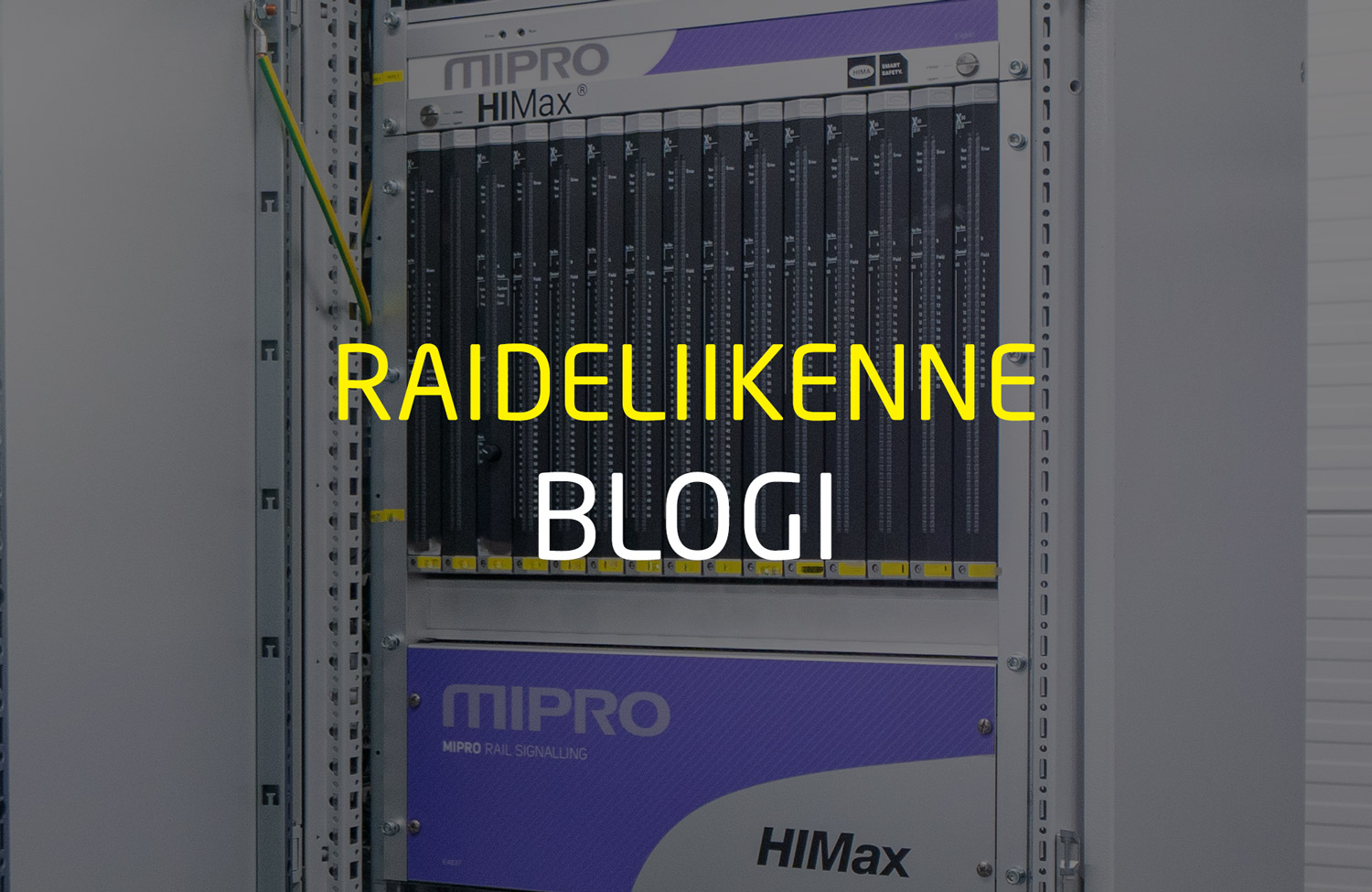Simulations play a key role in the development of any real-world system. They use real data or scenarios to mimic the functions of these systems. Developers and operators use simulations every day during the development and operation of systems in order to test specific scenarios and identify how the systems will respond under such circumstances. Simulations can be used to predict outcomes for any hypothetical situation or future occurrence of a scenario. During system development, the key benefit of using simulation is a cost-effective system with reduced risks. During testing, it is the performance, efficiency, and reliability of the system. Once the system has been deployed, the developers can use simulations to explore specific scenarios based on the input data.
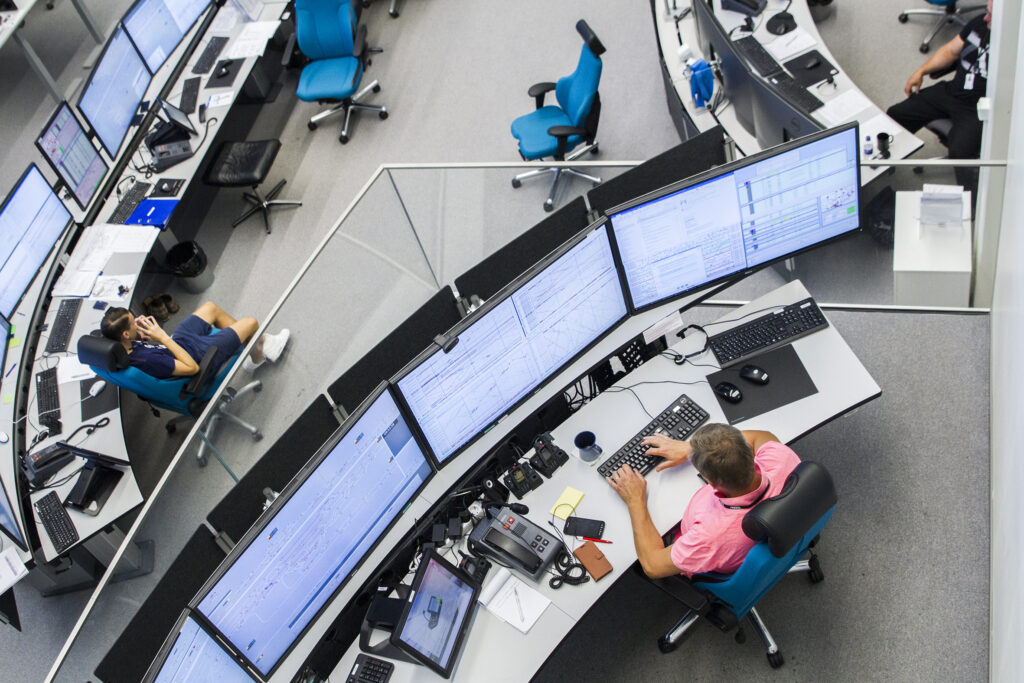
Simulations in railway systems
Both systems and environments in the real world are becoming increasingly complex, thereby making it challenging to identify and test every scenario. In railways, many different operative systems work together to provide a comprehensive solution for rail traffic operations. Many of these system owners are IMs (infrastructure managers) and RUs (railway undertakings), while there are also other system owners who plan, manage, re-plan and ensure that the traffic runs on the railway tracks according to the schedule by maximising the use of the available track capacity. These systems include safety systems such as interlockings and RBC (Radio Block Centre), traffic control systems such as CTC (Central Traffic Control) and TMS (Traffic Management System – see fig.1), traffic planning systems such as timetable planning or management systems and rail capacity management systems and situational awareness systems. In addition to these systems, there are also many other systems that support day-to-day railway operations for the IM and RU. Many of these systems are connected to the safety systems and the CTC system, either directly or through interfaces. The challenge arises when system owners procure many of these systems over many years from multiple vendors with functionalities that are most often based on the implementation techniques and technologies that the vendor had available at the time.
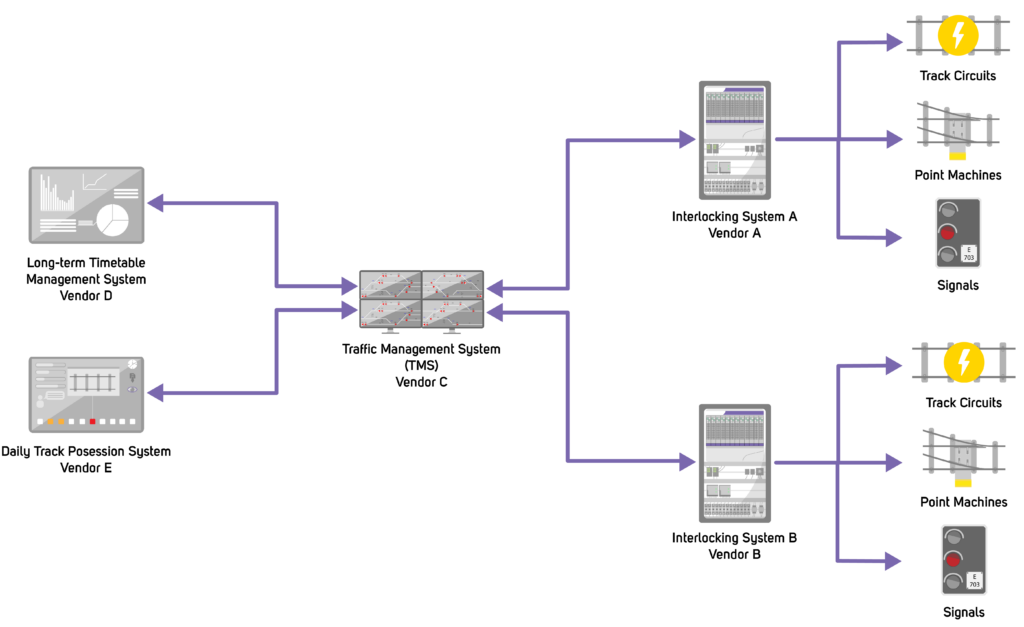
Traffic management simulations
The traffic operations centre operates 24 hours a day, 7 days a week and the traffic operators spend most of their time in front of the track layout screens observing the traffic. In a well-designed timetable-based automation system, traffic operators may not need to take many actions to manage traffic. However, there can be many situations, ranging from a delayed train to the malfunction of a point machine on the track, that require the traffic operators to make an immediate, conscious decision using the automated tools that are available in the system.
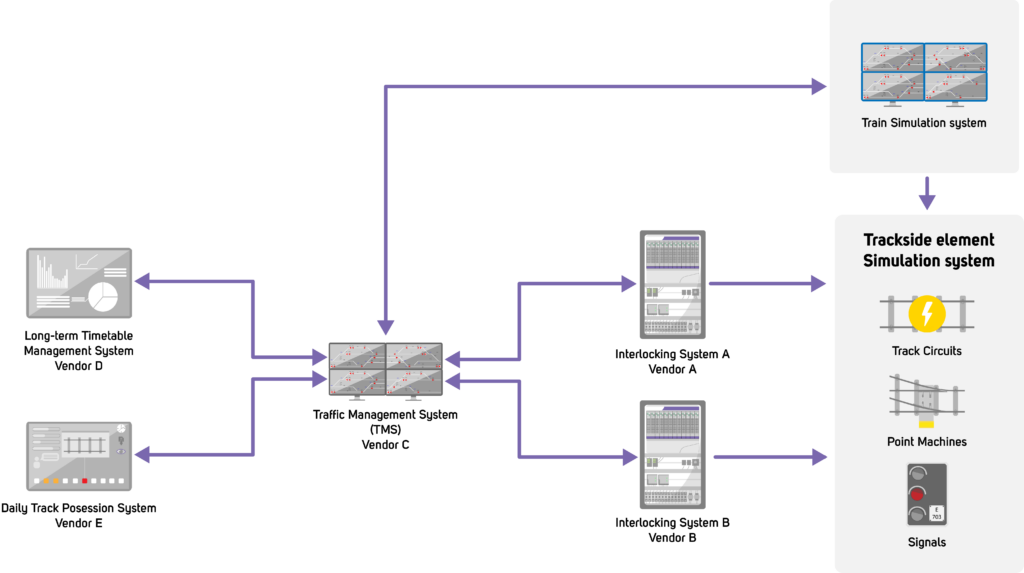
Railway traffic management relies on real-time information from the connected systems (fig. 2). Track vacancy detection technologies, such as axle counters or track circuits, provide the interlocking with train movement information. The interlocking then manages and controls the operations of most trackside elements. There may also be another interfaced system, such as a timetable planning system that provides long-term timetables for traffic management, or the track work system that provides track occupation information at any given time. The traffic management system receives and processes all this information so as to effectively manage the traffic according to the timetable, whereby it understands the route information as defined by the interlocking and based on the physical geometry.
Interlocking and trackside element simulations
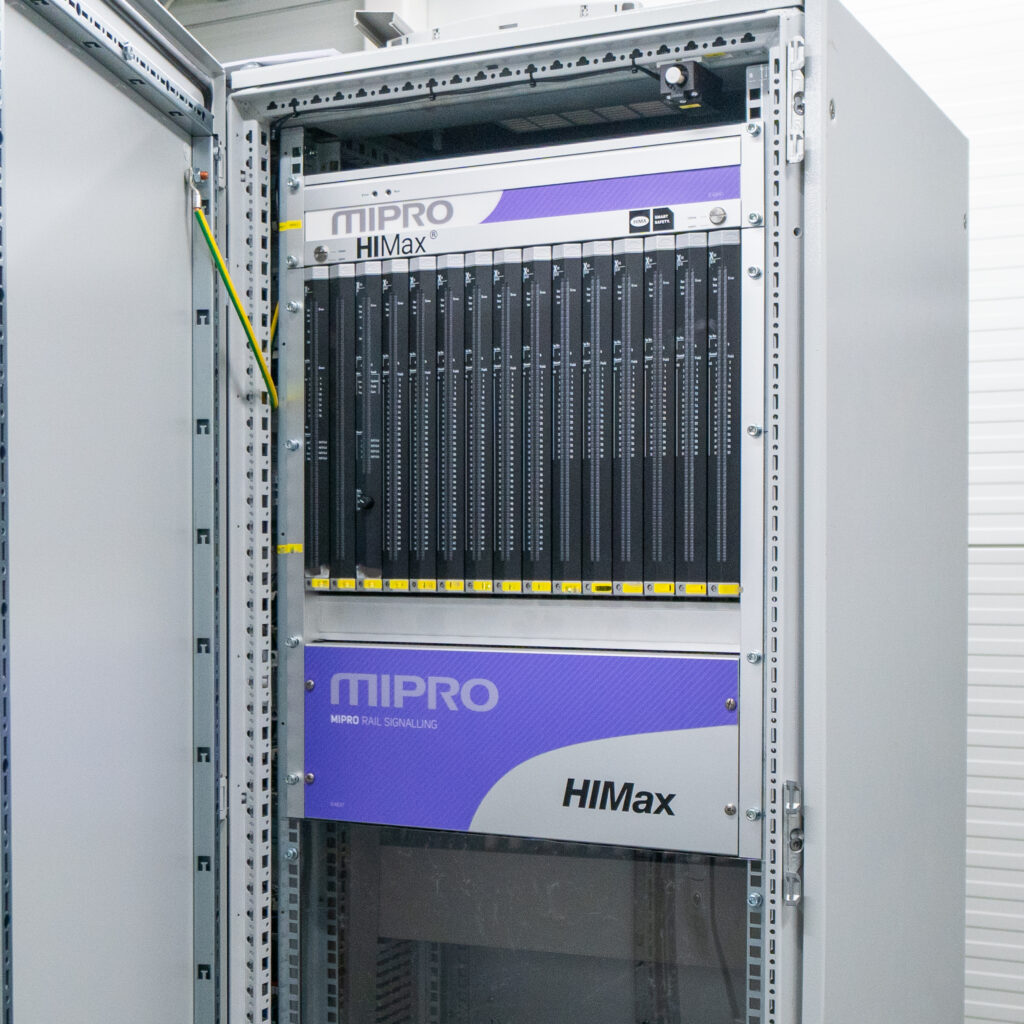
One of the challenges in building a traffic management simulation environment involves maintaining a system functionality that is similar to that of the original systems. This is a challenge for systems such as interlockings that run on dedicated hardware (fig. 4). Such challenges can be overcome using hardware and software virtualisation technologies. In addition, a multi-vendor interlocking solution where different vendors have implemented the same IM requirement, but based it on their own internal technology choices and implementation details, can pose a greater challenge.
One aspect that needs to be addressed in the simulation of the interlocking system is the control of the physical trackside elements. A given interlocking system can have numerous types of switches, signals and track vacancy detection systems. The simulation of these trackside elements is challenging as they often have very precise characteristics according to their age, generation and element type. If deemed necessary, specific characteristics must also be defined for each individual element type. It is important to have a good understanding of such elements and their characteristics and it is helpful to have discussions with customers who have maintained these types of devices.
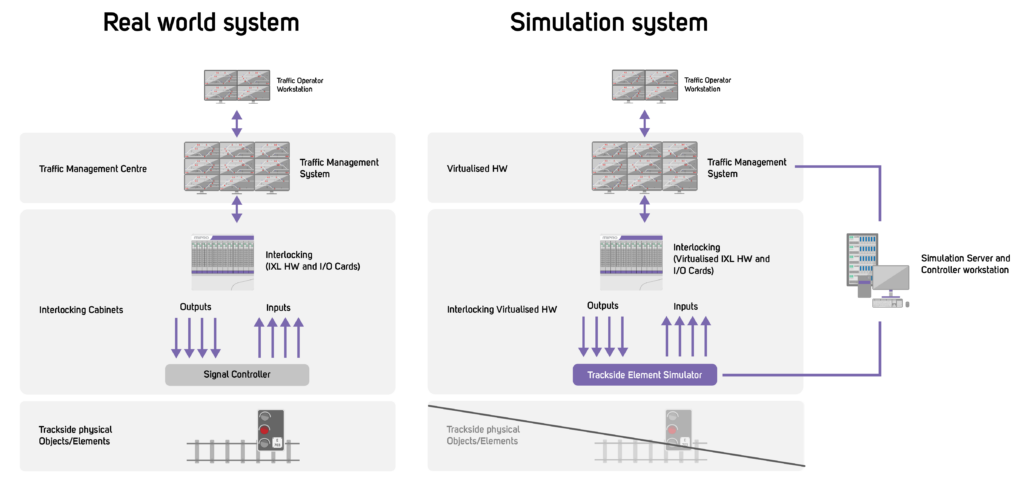
Train simulations
The train simulation process includes simulating a train with accurate characteristics and driving it with the help of simulated trackside elements. The basic functionality of a train simulator involves creating trains on simulated tracks. These trains can be created automatically using the timetable or can be added to the simulation by user when creating a specific simulation scenario. The trains will continue to appear in the rail network with the available timetable and can run on the virtual tracks controlled by the simulated trackside elements.
Traffic simulations: the built approach
The train simulation process includes simulating a train with accurate characteristics and driving it with the help of simulated trackside elements. The basic functionality of a train simulator involves creating trains on simulated tracks. These trains can be created automatically using the timetable or can be added to the simulation by user when creating a specific simulation scenario. The trains will continue to appear in the rail network with the available timetable and can run on the virtual tracks controlled by the simulated trackside elements.
The way forward
Building a real-world traffic management simulation is a complex task, especially when the simulation environment needs to consider the physical characteristics of all the systems and trackside elements from different generations. The interactions between all the components in a simulation environment need to be identified in detail and an agreement then has to be reached on whether to use a compromise or to implement a detailed interaction model. The important thing is to identify the minimum requirements and then to add more systems and features as needed in order to improve the simulation environment.
RELATED CONTENT
Article:
Read more about:
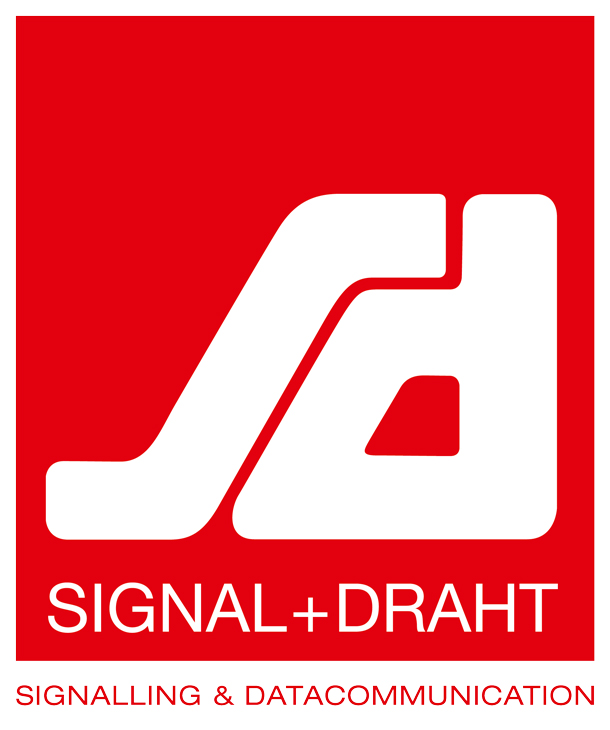
author

Omair Javed
Product Manager
Mipro Oy

